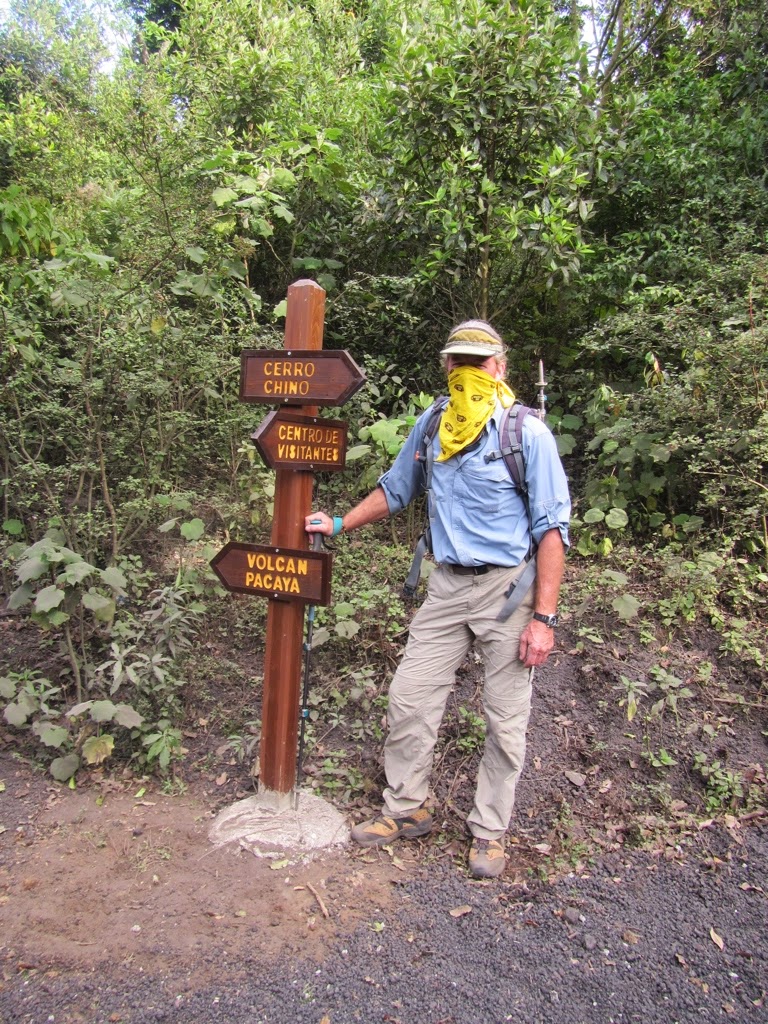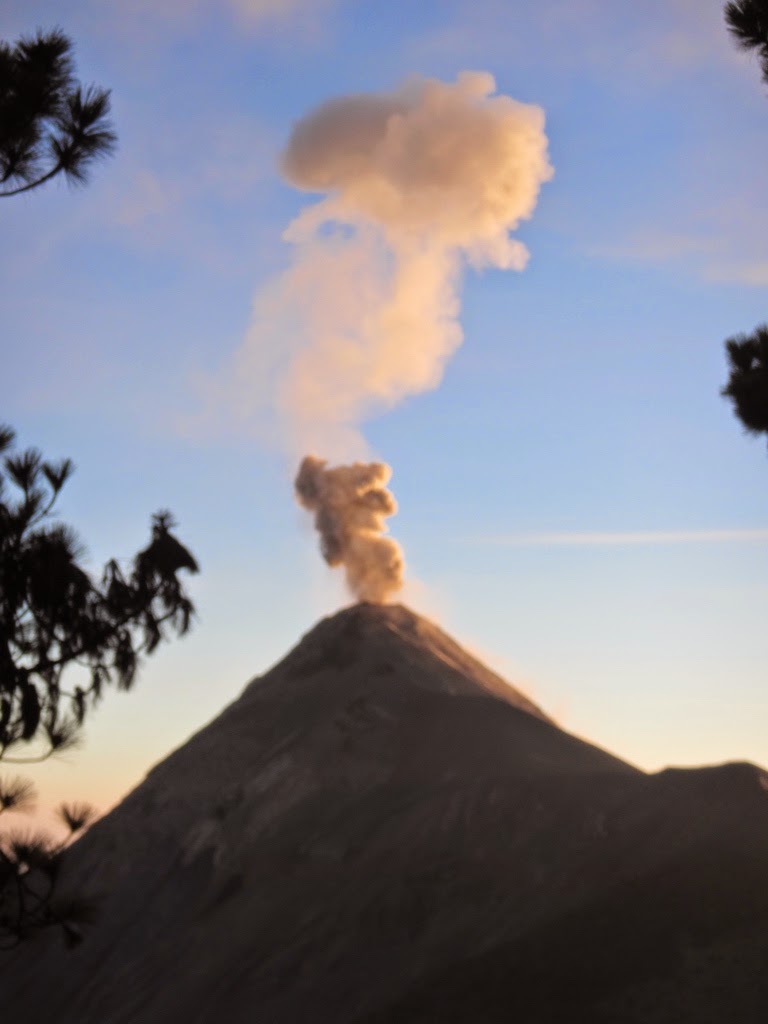 |
 |
| 8.9 knots under double reefed main |
By midday I'd shaken out one reef and set both headsails, and we were passing Nicaragua's San Juan del Sur (a popular surf beach crowded with Aussies), on our way to the gulf of Fonseca, where three countries meet - Nicaragua, Guatemala and El Salvador.
At sunset we were still charging along on a reach under full sail, and I had made the decision to carry on direct to Bahia del Sol, El Salvador and wait off the bar til morning for a pilot.
Three countries in one day! The line of volcanoes along their coastlines an impressive sight, especially at dusk and dawn. Absolutely fantastic sailing!
Passing over the bar was my first hazardous encounter with potential grounding since the "Costa Rica Incident" and I don't mind admitting I was very anxious. Happily it was all over quickly and I was being welcomed at Bahia del Sol Marina with a rum cocktail and the easiest most enjoyable "clearing in" process ever.
The cruisers there were all gearing up for the El Salvador cruisers rally, and in fine form. I was welcomed like an old friend. There I met people who had shared in a similar experience of protracted repairs in Quepos, was put in contact with crew for going north that worked out exceptionally well, and given endless invaluable advice for cruising in North America. One expat, Lou, opened his home to cruisers every Sunday afternoon for pot luck BYO drinks and dinner, where we watched the Superbowl final.
However my focus was to notch up some volcanoes, so I very quickly headed out on a "chicken bus" to San Salvador, and boarded a coach to Guatemala.
In one day I made it to Antigua, the delightful World Heritage listed city near Guatemala City populated with expats, touristas, Catholic monasteries & churches, and surrounded by impressive volcanic peaks.
 |
| Fuego and Acetenango from a plaza in Antigua |
 |
| Monastery Ruins |
 |
| Above the catacombs |
OX Expeditions offered overnight hikes on Acetenango and that was the closest I would be able to get to Volcan Fuego, currently very active and providing impressive displays.
Acetenango is Central America's third highest volcano at 3976m (13,044') and last erupted in 1972.
Twelve of us hiked up to base camp at 3400 m asl and enjoyed some stunning ash eruptions and lava flows from the time we arrived at 4 pm right through the night and again during our sunrise summit of Acetenango.
 |
| Into Cloud Forest again |
 |
| Tussock and Pines at sub-alpine altitude! |
Even though it was an arduous climb with moderately heavy packs, our group clicked early, making the overnight hike a social time esp. around the fire at night with songs, stories and wine. I chose to sleep under the stars to see as many pyroclastic flows as possible, and tho there was a layer of ice on my bag at dawn and regular breaks in my sleep with every rumble it was totally worth it. I was to hear two days later that this activity was just a warm up - Fuego erupted on February 7 as I was returning to El Salvador, pushing ash plumes 5000' above the summit, ash falling on Guatemala City, and closing the international airport.
 |
I must have got some rest as in the morning as the final climb to the summit was easy, and I even took part in the crater rim run and earned a free t-shirt. Second fastest in the group, not bad for an old guy, huh?
 |
Acetenango Summit at Sunrise |
While in Antigua I also hiked around the flanks of Pacaya as a warm up to the overnite hike, visited a couple of monastery ruins and soaked up views of Volcan Agua that dominates the city.
 |
| Great Coffee! |
 |
(Antigua's climate is so consistently benign that priests of old chose it over all others and resulted in many churches being built there. However most have been destroyed by the equally consistent earthquakes)
Dragging myself away from this cultural oasis, I took another chicken bus out and returned to El Salvador, making my way toward Santa Ana.
My run of luck with public transport was out by now, and my rudimentary Spanish not up to the task. I found myself out of light, hitching a quiet road alone in a region of dubious integrity. I got on a crowded bus and stayed on it till reaching a major town where I could get a room for the night. Of course that place was nowhere near my destination and I would need a new route in the morning. It turned out to be Sonsonate, a down at heel town boasting the highest stats for murder, prostitution and drug cartel activity in the whole country!
At dawn I'm out of the filthy hotel like a shot, scouring the bus terminal for a bus to Santa Ana. The one I chose dropped me at a junction high in the Parque National Cerro Verde above Lago Coatepeque, a stunning lake in a massive caldera, 12 km short of my destination, with only 2 hours to get to the meeting point for the volcano hike.
 | |
o ice in his carry box just paper! |
After walking the first 4 kms I was picked up by a young enthusiastic couple going to a election campaign at the Park's campground. We drove past many coffee pickers, chatting about El Salvador politics until the car broke down 2 kms short of the park entrance. In the end I made it in time to join the day's tour. It is illegal to climb Volcan de Santa Ana without a park guide and an armed guard, and they leave at 11 am sharp.
The group was large, with many El Salvadorians, as it was a Sunday. We paid two dollars each on three separate occasions to park staff and land owners as the trail made its way upward, and in two hours reached the crater rim, a height gain of only 900 metres. It was my first experience of buying an ice-cream from a vendor on a crater rim! You have to be enterprising in this poor country.
The Santa Ana Volcano, or Ilamatepec, is a large cinder cone. At 2,381 metres above sea level, it is the highest volcano in the country. It last erupted in 2005, forcing the evacuation of villages and killing two people. The crater is a set of nested calderas and contains an impressive lake similar in color to the glacial lakes back home.
 |
My return to Whakaari on anchor at Bahia del Sol was delayed a day as I missed the last bus out of San Salvador while buying provisions. So, another $7.50 room, cleaner but still of dubious reputation (no mirror in the bathroom but plenty round the king size bed) and lots of comings and goings!
All was well on my return, and I was looking forward to another Sunday session with the cruisers, but my body decided I needed a rest and I slept through til the evening, meeting everyone coming back from Lou's as I belatedly headed up river in my dinghy with a hastily made pasta dish. I was sorry to miss that occasion as I wanted to pick people's brains about points north to Mexico.
I cleared out of El Salvador the next day and crossed the bar early Tuesday morning in the company of Steve and Trish on Kuyima, they heading sound, me turning north to Chiapas, Mexico, and my next challenge, the Tehuantepec gap wind.
 |
| Volcan Pacaya Hike - The volanic ash is so fine it floats up when you walk, so a bandana is a great filter. |
 |
Toasting Marshmallows in cooling lava |
 |
 |
| Preparing to leave Bahia Del Sol at dawn |






















































